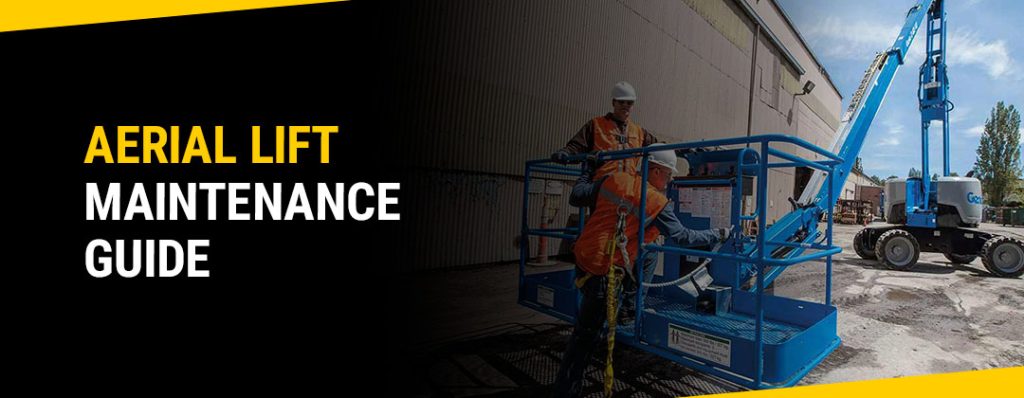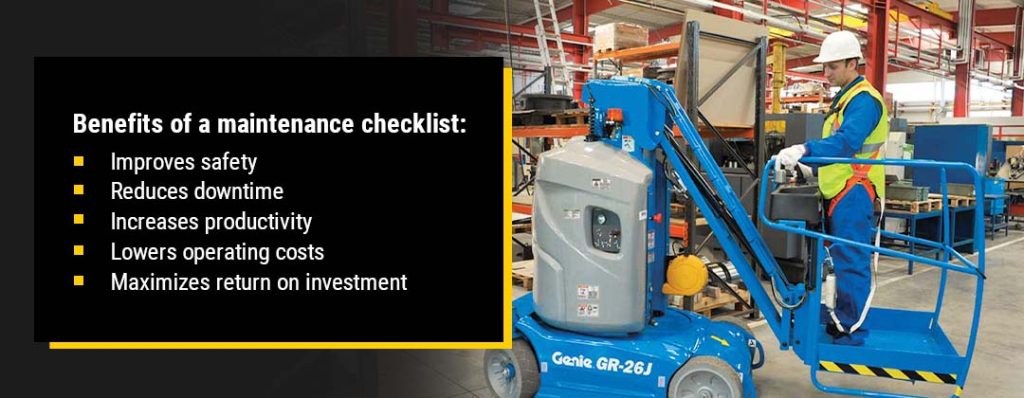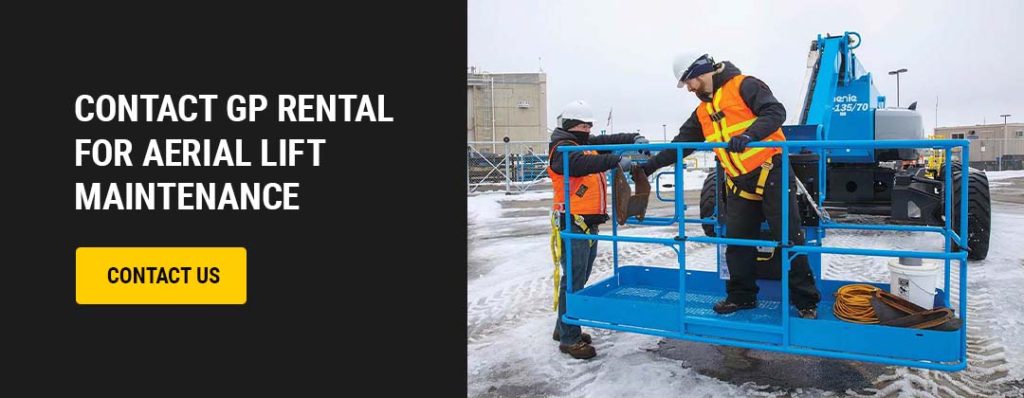
Aerial lifts are mobile elevated work platforms (MEWPs) that ensure your team can safely operate in areas otherwise out of reach. They provide a controlled raised work platform that allows your crew can get the job done safely. As a result, aerial lifts need to work at optimal levels every time to ensure the safety of your team.
Regardless of the type of aerial lift you use, regular aerial lift maintenance is essential to the safe operation of the equipment. One of the best ways to do so is to create an aerial lift maintenance checklist for daily inspections and regular maintenance.
Creating an aerial lift maintenance schedule benefits your crew and worksite in several ways. Having a set maintenance schedule can help streamline work, allowing for on-time job completions. Regular maintenance ensures the safety of your crew and helps reduce operating costs.

Here are a few specific benefits of a maintenance checklist:
When creating an aerial lift maintenance checklist, you must consider the type of aerial lift you have and the model. An electric scissor lift will need its battery checked regularly, while an internal combustion scissor lift will require engine maintenance. While many parts of a maintenance checklist can be used across aerial lifts, make sure to tailor your schedule to suit your specific aerial lift.
One of the best ways to do this is to check with the manufacturers operating guide. These guides will help you focus on the most important maintenance aspects so that your machine runs as efficiently and safely as possible.
When creating a checklist, there are three main aspects to look at:
In addition to these three aspects, operators should perform daily and visual inspections to safely operate aerial lifts.
Daily aerial lift inspection can help identify any issues early on before they become more costly and time-consuming to repair. This process ensures you take care of minor problems regularly rather than have them build up before a significant, planned maintenance break or service.
Operators should perform pre- and post-operation inspections for effective maintenance. The parts included in these daily inspection checklists may vary depending on the aerial lift model and the working conditions. The more challenging the terrain and the work, the more elements you’ll need to check.
A significant part of maintenance is visual inspection. Walking around an aerial lift and inspecting different parts can highlight damage or areas needing repair. When visually inspecting your equipment, look for the following:
Operational checks ensure your aerial lift systems all work correctly. Refer to the operator’s manual for performing functional tests for the different systems as needed.
There are a few things you’ll need to check on every aerial lift before you start working, including the following:
Ensuring the structural integrity of your aerial lift can improve the safety of your operators and crew. Things like guard rails and platforms must be secure and stable when lifting workers in the air. Your structural checklist should include the following:
Where you work plays a significant role in the condition of your aerial lift. Look for any hazards that can damage your equipment and threaten the safety of your crew.
Here are a few hazards to look for:
Ongoing maintenance can ensure the safety of your aerial lift operators and work zone while keeping your aerial lift in good condition.
The three main safety concerns when operating aerial lifts are:
Having a clear maintenance schedule in place can help you prevent these accidents. Here are a few additional maintenance and safety tips for aerial lifts:

Regardless of whether you’re renting aerial lifts or buying them, regular equipment maintenance can have a range of benefits for your workplace and your crew members.
At GP Rental, our trained technicians provide professional maintenance services. Our mobile field service team offers the same high-quality work as our repair facilities.
Contact us today for professional, quality aerial lift maintenance.